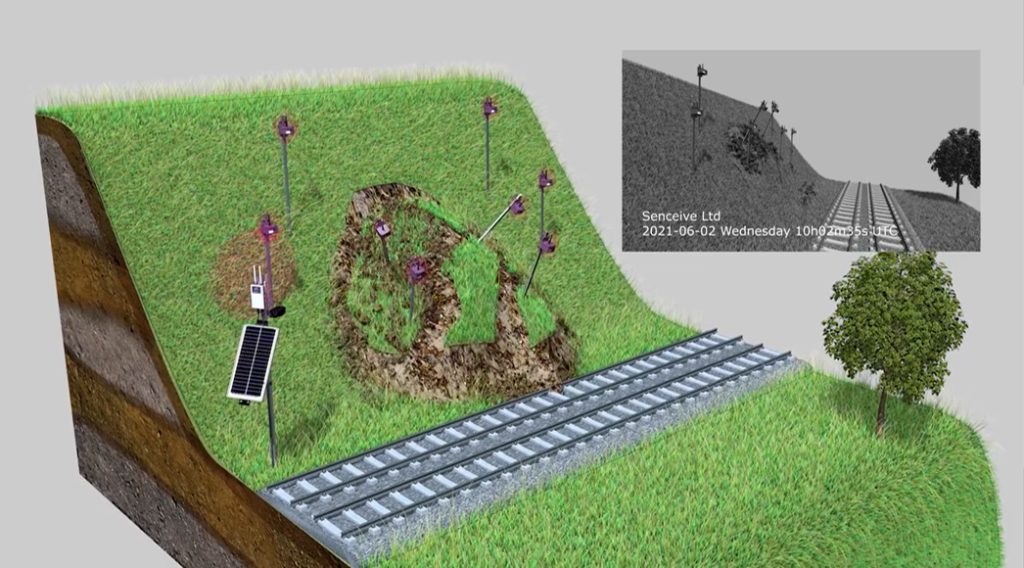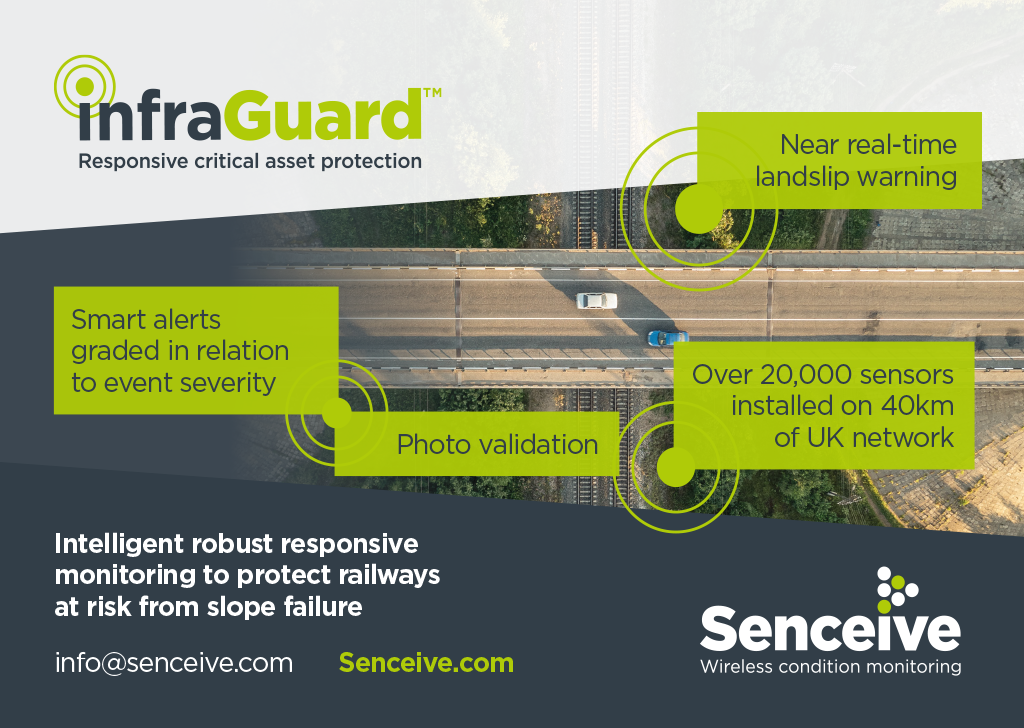Among the recommendations to mitigate landslip risk made in the ORR report on Stonehaven, is the greater use of monitoring technologies. A number of solutions are in the mix, including InSAR, LiDAR and CCTV. However, the technology that has seen the most significant adoption in the last two years is wireless remote condition monitoring, which utilises tilt sensors to detect movement and cellular communications to warn stakeholders of problems.
Responsive monitoring
London-based IoT specialist Senceive has developed a package of technology including tilt sensors, cameras, a cellular communication platform and a responsive software umbrella. Tracing its roots back to trial deployments in 2018, its InfraGuard™ package has been deployed at scale across numerous Network Rail routes. Over 20,000 sensors are now in use on slopes adjacent to more than 40km of track.
InfraGuard is a responsive wireless monitoring solution enabling asset owners to manage critical infrastructure exposed to geotechnical risk. It provides near real-time warning of ground movement and is ideal for locations that are: remote, where frequent inspection is challenging; high value, where failure can result in major disruption or risk to life; and at-risk, where assets are vulnerable to damage from sudden geotechnical events such as landslides or washout.

InfraGuard not only tells stakeholders what is happening on site – it also shows them. “Smart tilt sensors respond to ground movement to give immediate insight of an event,” says Senceive product manager, Dominic Kisz. “The system sends alerts of small-scale movement which could be early signs of a slope failure, and graded alerts of further movement, validated by photographic images.”
Proven technology
With a track record of detecting potentially disruptive and dangerous events such as railway cutting and embankment failures, InfraGuard can be the engineer’s eyes and ears on site, without needing feet on the ground. It can be installed in just a few hours by non-specialists and can function for over a decade, needing only a handful of maintenance visits.
Movement is detected by triaxial tilt sensing nodes, usually installed on stakes driven into the ground. These highly precise devices can pick up rotation as small as 0.0001 degrees and transmit data to the internet via a 4G cellular communication gateway. Nodes are battery-powered and gateways and cameras solar-powered ─ precluding the need for fixed power or telecoms infrastructure.
Low-light cameras work 24/7, sending images periodically (e.g. every hour) – or when triggered by the smart tilt sensing nodes. This instant view enables users to differentiate between false alarms, small-scale movement, and sudden large-scale movement that could represent an emergency. All without visiting the site.
Long-term trends
Readings are taken at set intervals to provide long-term static trending which gives valuable insight into asset characteristics through different seasons and climatic changes. Concurrently to the static measurements, the sensors also measure for increases in movement over one second periods to ensure that sudden event failure is also captured and alerted.

When movement is detected, sensor and camera activity is automatically accelerated ─ with the response related to the severity of the event. A small movement detected by one sensor will trigger an amber alert, which can be checked remotely by viewing a photo; a moderate movement event detected by multiple sensors could trigger a red alert; and a sudden and significant movement detected by multiple sensors could trigger a black alert ─ prompting immediate action such as a speed reduction or line closure.
With increasing pressure to enhance detection of slope failure, whilst reducing track visits, it seems likely that rail infrastructure owners will look to increase the adoption of remote monitoring technologies such as InfraGuard.


